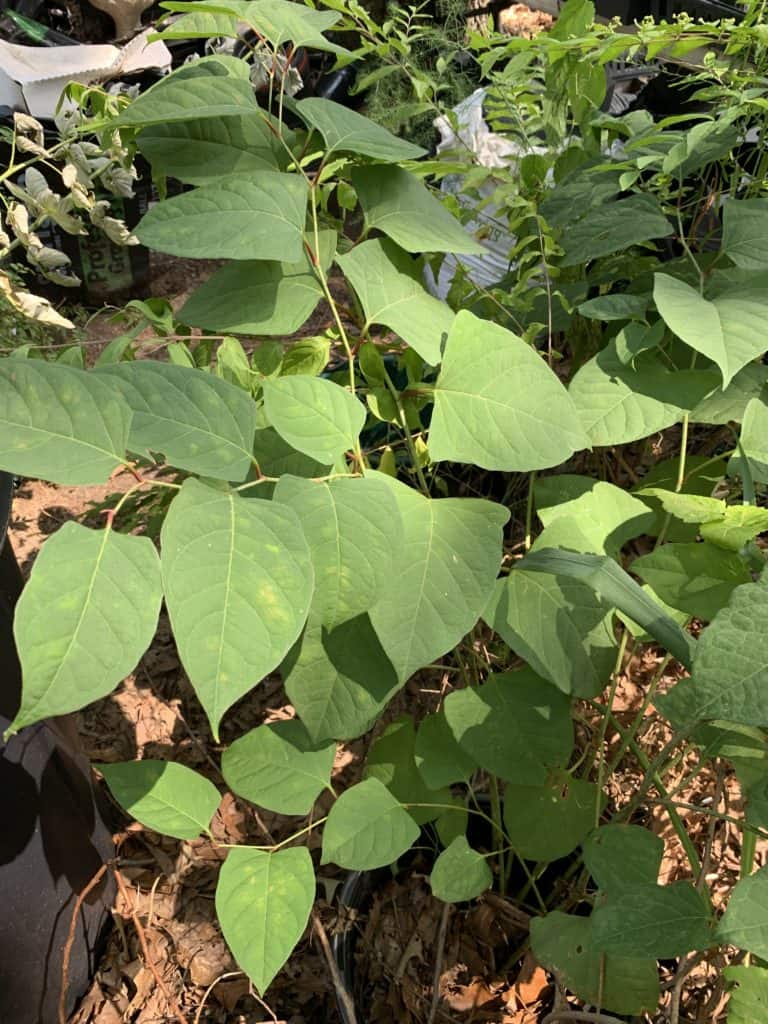Gardening for Health

Get to Know Japanese Knotweed
By Maria Price
Japanese knotweed (Polygonum cuspidatum) was brought to Europe from Asia in the 1800s. P. cuspidatum, native to Japan, Taiwan and Korea, was introduced in 1825 to Britain as an ornamental species. It was ultimately sold by a large number of commercial nurseries around in England and it arrived in the U.S. in the late 1800s. Due to its prolific spread, it began to take over gardens, roadsides, riverbanks and more.
It’s a very tenacious plant and spreads quickly as it is a plant that typically colonizes areas after volcanic eruptions and has a root system that can penetrate hard ground.
Japanese knotweed grows five to 10 feet tall with delicate white or yellow flowers and its fragrance attracts bees, butterflies and other nectar-sipping flying insects. It has heart-shaped leaves and bamboo-like stalks that are edible when they first emerge in the spring. It likes moist areas and thrives in deep shade, high temperatures, high salinity and drought.
While it is important that gardeners don’t promote the spread of this invasive plant, Japanese knotweed can be harvested and utilized for its health benefits.
Research suggests that this plant may be useful in treating Lyme disease. Stephen Buhner, author of Healing Lyme, pioneered the use of treating Lyme disease with herbal protocols. Japanese knotweed is a powerful addition to the Western medical pharmacopoeia. In its leafy stage, the whole plant can be tinctured for its medicinal properties. Based on pharmacological and clinical studies, Japanese knotweed has antiviral, antimicrobial, anti-inflammatory, neuroprotective, and cardio protective functions. A Johns Hopkins university study headed by Dr. Zhang, found Japanese knotweed effective for tick-borne diseases caused by borrelia and babesia bacteria. Lyme disease is caused by Borrelia burgdorferi, a spirochete bacterium.
There is still much to learn about using plant-based medicines to treat Lyme disease. But you can certainly enjoy using Japanese knotweed in your food and beverages, as it is safe to ingest. Buhner recommends collecting the roots in spring or fall. Make a tea from the roots by simmering 1 tablespoon of chopped roots in 4 cups of water until reduced by half.
